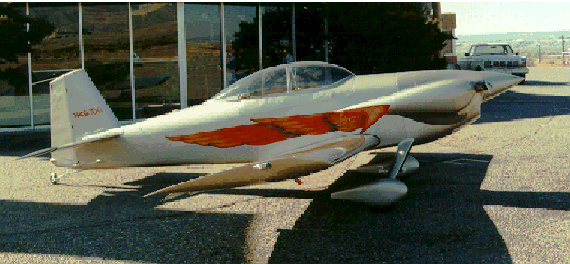
 |
||
|
|
| I have been a member of the Experimental Aircraft Association since 1962, even before I started flying. The idea of building my own aircraft became compelling. I attended EAA conventions in Oshkosh and Sun N Fun in Florida for many years always intrigued and fascinated by the beautiful aircraft. Finally, after my family was grown and I started back into aviation and flying in a serious way, I began to investigate the possibilities. In 1990, I selected the RV-4 for a project and bought the tail kit to see what it would be like. Looking at the estimates and reports from other builders, I estimated about 2000 hours over two years or so to build it depending on time available. The cold reality is, the project took over three and one half years and over 5000 hours. These hours were invested by myself and my son, Devin, with lots of help from his friends, Eric and Mark. The end result is shown above. The aircraft is beautiful to look at and flies as wonderful as it looks. First flight was at Coronado Airport in Albuquerque on 20 November 1993. I did the test flying, except for the aerobatic envelope, and have flown all but about one hour of the 200 hours now on the aircraft. The aircraft features an IO-360 Lycoming engine with 10.5 to 1 compression pistons giving an estimated 230 horsepower driving a constant speed prop. The aircraft was originally designed for 160 horsepower, so the extra horses provide spectacular climb capability. It also has inverted fuel and oil systems. The aircraft weighs 1108 pounds dry. This is heavy for an RV-4 and is the result of the big engine, prop, inverted systems and the very complete avionics suite. Overall, we are quite pleased with the weight given all the extra goodies. The IFR Panel |
 |
||
|
|